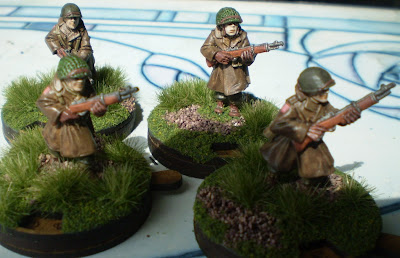Burma under the reign of King Hsinbyushin followed an aggressive expansionist policy. Having recently invaded Siam and even capturing their capital in 1767 (but failing to bring them to peace) Hsinbyushin then started to raid the Chinese boarder. China's Emperor Ch'ien Lung launched a major invasion into Burma. This caught the Burmese somewhat by surprise as the vast majority of their troops were fighting in Siam. Fortunately for Hsinbyushin the Chinese expecting a rather easy campaign had committed mostly untrained troops to the invasion and the greatly outnumbered but superior Burmese defeated the invaders. The second invasion was no more successful as more troops were committed by both sides to a slowly expanding conflict.
By the time of the third invasion the boarder conflict had become a full scale war as more and more Burmese troops were taken from the Siam front and thrown into defence against the massed Chinese armies.
 |
| Elite Manchu Bannermen |
The third invasion (1767-68) was the most successful as it used the Elite Manchu Bannermen as the main part of the invading fore. China being so much larger than Burma had the forces to keep up the pressure on the Burmese and could replace lost troops far faster than the defenders and after winning a series of battles and smaller engagements were within a few days march of the capital (Ava). This was as close as they were to get. Each battle had cost the Bannermen high in casualties. The jungle was not neutral, many more soldiers were to die from disease or starvation as supply lines were cut by smaller Burmese units operating to flank and rear of the Chinese battling forwards. Momentum was lost and the remains of the army staggered back to china. King Hsinbyushin well aware of how close a call it was stripped Siam of most of his remaining troops and reinforced his border posts.
The fourth and final invasion was also the largest as Ch'ien Lung determined to bring the war to an end in his favour was bent on battering his way into victory. The invasion soon bogged down and the more mobile Burmese forces soon had the Qing forces surrounded and a truce was organised between the opposing commanders in December 1769.
Both sides kept an heavy presence on the boarder for about ten years but no more attacks were made by either side. China also held a trad embargo for 20 years with Burma but in 1790 Diplomatic relations were reinstated. China claiming this as a victory against Burma. Estimates of Chinese losses vary greatly between 20,000 and 70,000. What can not be disputed is that some of the cream of China's army was lost in the third invasion. Siam was the real winner, with the main war effort shifting from there to China they were able to claw back the lost territory and settle on good terms. Another example of fighting wars on two fronts just not being effective.
























